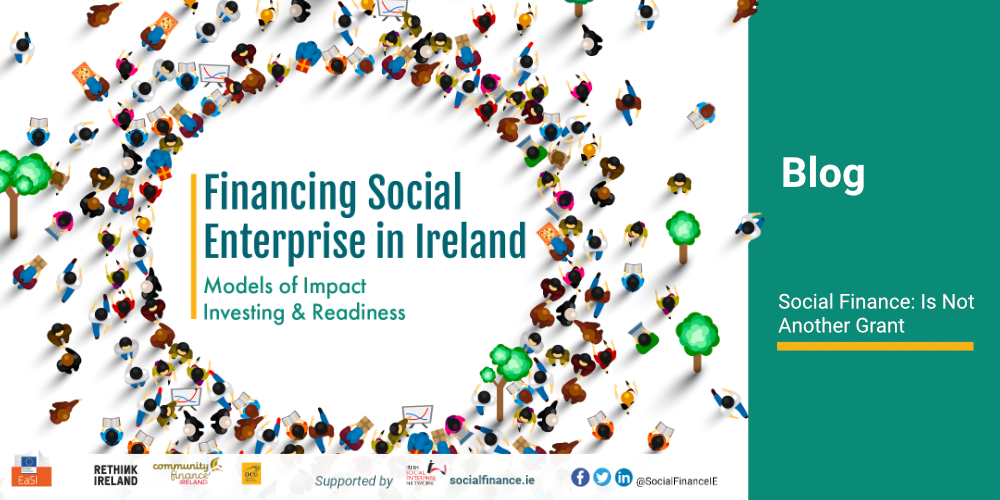And the awareness of how they differ is becoming increasingly important as the Not for Profit sector looks towards sustainability and ongoing success.
In September 2021, responses provided to a survey on Social Finance (commissioned by Dublin City University) highlighted “Grants” as the default financial support considered by the sector when asked about matters relating to “Social Finance”.
The early results of this research brought into sharp focus the need to increase awareness across the Social Economy in Ireland of, and clearly differentiate between, “Social Finance” on one side, and “Grant Support” on the other.
At its simplest, “Social Finance” is a form of financial credit, provided to those entities demonstrating both, social impact arising from their activities, but also a capacity to repay. Whilst we must be careful not to diminish the importance of the former criterion, it is the capacity to repay which sets this support apart from Grants, themselves widely available within the Social Economy.
“Social Finance” remains outside that competitive environment usually evident across “Grant Funds”. The latter will inevitably comprise a finite amount of support, dedicated towards a restricted variety of purposes, with applicants often prioritised over one another in terms of impact measurement and, social return on investment.
Conversely, Social Finance will deal with all proposals on their own merits. The revolving nature of repayable credit means that usually, limitations on access to capital need not be considered. Any restrictions on quantum are more likely linked to a finance provider’s appetite for risk, and based on historic experience within a specific market.
Grants have an important place in the Social Economy. Some examples include, seed funding for untested start-ups with potential to scale, underpinning non-income generating community services and, as co-funding for infrastructural development where enhanced social impact is apparent.
Social Finance can be viewed as the “next step”, where community of interest buy-in has been proven, where income streams are established, and where an ambition for self-determination applies.
Its future is in its multiplicity of impact. Whilst the Grant is disbursed once in the hope of leaving impact, Social Finance enters a circular economy aiming to leave a legacy.
